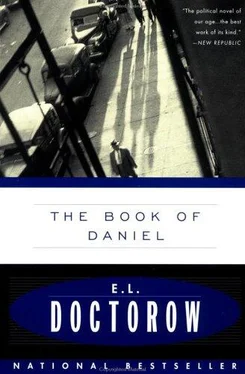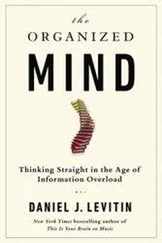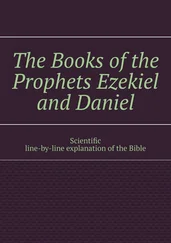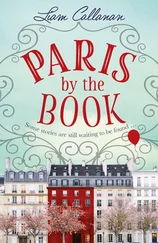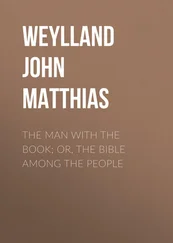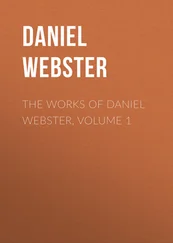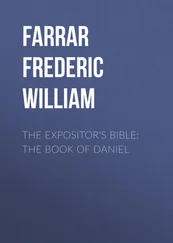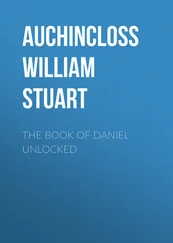Within the thematic unities of Disneyland, there are numbers of references, usually in the form of rides, exhibits or stores, to figures or works of our literary heritage. Some of these are Alice in Wonderland (Mad Hatter’s Teacup Ride), Peter Pan (Peter Pan Flight), Life on the Mississippi (Mark Twain River-boat), Wind in the Willows (Mr. Toad’s Wild Ride), Swiss Family Robinson (Swiss Family Tree House), and Tom Sawyer (Tom Sawyer’s Island Rafts). In addition there are implications of proprietary relationships with various figures of history, myth and legend such as King Arthur, Sleeping Beauty, Snow White, Casey Jones, Mike Fink, Jean Lafitte, and Abraham Lincoln. It is hard to find a pattern in the selection of these particular figures. Most of them have passed through a previous process of film or film animation and are made to recall the preemptive powers of the Disney organization with regard to Western culture. But beyond that no principle of selection is obvious. It is interesting to note, however, that Walt Disney’s early achievements in his original medium, the animated cartoon, employed animal characters of his own devising. The animated cartoon itself, except for Disney’s subsequent climb into the respectability of public domain literature, came to express the collective unconsciousness of the community of the American Naïve. A study today of the products of the animated cartoon industry of the twenties, thirties and forties would yield the following theology: 1. People are animals. 2. The body is mortal and subject to incredible pain. 3. Life is antagonistic to the living. 4. The flesh can be sawed, crushed, frozen, stretched, burned, bombed, and plucked for music 5. The dumb are abused by the smart and the smart destroyed by their own cunning. 6. The small are tortured by the large and the large destroyed by their own momentum. 7. We are able to walk on air, but only as long as our illusion supports us. It is possible to interpret the Disney organization’s relentless program of adaptation of literature, myth and legend, as an attempt to escape these dark and rowdy conclusions of the genre — in the same way a tenement kid from the Lower East Side might have grown up with the ambition of building himself a mansion on Fifth Avenue. Yet, ironically, many of the stories and characters chosen by Disney for their cultural respectability are just as dark and just as rowdy. The original Alice in Wonderland is a symbolic and surreal work by a benign deviate genius. Mark Twain was an atheist and a pornographer, and his great work, Huckleberry Finn , is a nightmare of childhood in confrontation with American social reality. In this light it is possible to understand the aesthetics of cartoon adaptation as totalitarian in nature.
It is clear that few of the children who ride in the Mad Hatter’s Teacup have read or even will read Alice , let alone the works of Mark Twain. Most of them will only know Alice’s story through the Disney film, if at all. And that suggests a separation of two ontological degrees between the Disneyland customer and the cultural artifacts he is presumed upon to treasure in his visit. The Mad Hatter’s Teacup Ride is emblematic of the Disney animated film, which is itself a drastic revision in form and content of a subtle dreamwork created out of the English language. And even to an adult who dimly remembers reading the original Alice , and whose complicated response to this powerfully symbolic work has long since been incorporated into the psychic constructs of his life, what is being offered does not suggest the resonance of the original work, but is only a sentimental compression of something that is itself already a lie.
We find this radical process of reduction occurring too with regard to the nature of historical reality. The life and life-style of slave-trading America on the Mississippi River in the 19th century is compressed into a technologically faithful steamboat ride of five or ten minutes on an HO-scale river. The intermediary between us and this actual historical experience, the writer Mark Twain, author of Life on the Mississippi , is now no more than the name of the boat. Piracy on the high seas, a hundred and fifty years of harassment of European mercantile exploration and trade, becomes a moving diorama of all the scenes and situations of the pirate movies made by Hollywood in the thirties and forties. When the customer is invited then to buy, say, a pirate hat in one of the many junk shops on the premises, the Pavlovian process of symbolic transference to the final consumer moment may be said to be complete.
The ideal Disneyland patron may be said to be one who responds to a process of symbolic manipulation that offers him his culminating and quintessential sentiment at the moment of a purchase.
The following corporations offer shows and exhibits at Disneyland: Monsanto Chemical Co., Bell Telephone, General Electric, and Coca-Cola. Other visible corporate representation includes McDonnell Aircraft, Goodyear, Carnation Milk, Sunkist, Eastman Kodak, Upjohn Pharmaceuticals, Insurance Company of North America, United Air Lines, and Bank of America.
Obviously there are political implications. What Disneyland proposes is a technique of abbreviated shorthand culture for the masses, a mindless thrill, like an electric shock, that insists at the same time on the recipient’s rich psychic relation to his country’s history and language and literature. In a forthcoming time of highly governed masses in an overpopulated world, this technique may be extremely useful both as a substitute for education and, eventually, as a substitute for experience. One cannot tour Disneyland today without noticing its real achievement, which is the handling of crowds. Coupled open vans, pulled by tractors, collect customers at various points of the parking areas and pour them out at the entrance to the park. The park seems built to absorb infinite numbers of customers in its finite space by virtue of the simultaneous appeal of numbers of attractions at the same time, including not only the fixed rides and exhibits and restaurants and shops but special parades and flag raising and lowering ceremonies, band concerts, and the like. (At Christmas time Main Street residents in period dress sing Christmas carols at the foot of a large odorless evergreen whose rubberized needles spring to the touch.) In front of the larger attractions are mazes of pens, designed to hold great numbers of people waiting to board, or to mount or to enter. Guards, attendants, guides, and other personnel, including macrocephalic Disney costume characters, are present in abundance. Plainclothes security personnel appear in any large gathering with walkie-talkies. The problems of mass ingress and egress seem to have been solved here to a degree that would light admiration in the eyes of an SS transport officer.
One is struck by the number of adult customers at Disneyland unaccompanied by small children. One notices too the disproportionately small numbers of black people, of Mexicans, possibly because a day at Disneyland is expensive. There is an absence altogether of long-haired youth, heads, hippies, girls in miniskirts, gypsies, motorcyclists, to the point that one gives credence to the view that Disneyland turns away people it doesn’t like the looks of. This particular intelligence occurred to Linda Mindish as Dale rolled into the parking acreage. The day was hazy and smog indicated the outlines of the sun. When we parked and boarded one of the tractor trains, the clean-cut girl conductor looked at me in what I thought was a regretful manner, her knowledge of my fate conflicting with the natural attraction she felt for my shoulder locks and fuck-everyone persona. Linda obviously did not know whether she was happy or distressed that I might not get in. I don’t think she thought I would quietly go away.
Читать дальше
